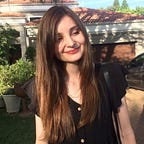Making Use of Design Thinking to Design a Calendar Application UX/UI
My Approach to a Digital UX Design Interview Challenge
Ever since I was introduced to UX design in the second year of my studies at the University of Pretoria, I have been intrigued by the design thinking process. I came to understand that a problem is impossible to solve until it is defined and, moreover, crafted in its definition. When well defined, the problem — a nebulous larva — suddenly presents its limbs and features unfalteringly.
The only way to de-noise the image of the monster is to empathise with the individual person who comes in contact with it — the damsel in distress. This (not entirely helpless) human being provides the context and knows more than a team of experts.
Always.
The Task
Here is the design challenge as it was presented to me:
(I had exactly three days to complete it..)
“Valentina leads sales and business development for a Fortune 500 company. She travels 3 out of 4 weeks in the month, and when she travels, it’s almost always internationally. Between all her travel to different time zones and a busy meeting schedule in different cities, she finds it challenging to keep up with her calendar to show up to the right place at the right time.
Design a calendar flow and interface that is smart enough to suggest meeting times, accounts for changing time zones, and is proactively working for Valentina to make sure she is always on time for her meetings. Also, design a landing page with an illustration to communicate its potential. Put together a presentation to walk us through your thinking process and design solution.”
…
(What a grub of a problem.)
The Process
Research
I did research on the available products, how they were successful and where they lacked based on user reviews and articles. I read Medium articles to see what other people had done to improve available products and found gaps for improvement:
Empathy
I collated a persona based on interviews I conducted with users. Valentina’s schedule, aspirations and pain points are based on those of real people that had been interviewed:
Briefly listed below are my main take-aways from the interviews:
Create
Below are some brain-pickings :)
Before rolling out the final UI design, I asked a few users to test my work in progress. I collaborated with users to optimise the user journeys and functionality of the app. We were taught to test at every level of the process, from wireframes to the final UI:
(So, now, the grub has been defined!)
The Final UI Design
The Visual Language
I created a small visual identity for the app to suit the agile requirements of the final product:
The User Flow
The user journey was designed in Adobe InDesign making use of the visual language design guidelines. The framework was based on wire framing drawn and tested on paper beforehand. Subtleties such as communicating errors in a form were executed as standard UX design principles. I made use of Material.io guidelines for spacing, sizing etc.
The Conclusion
Due to the time limitations, there are many areas in which I could have implemented better usability and more functionality. App integration is one of them. Although my MVP alludes to making bookings for flights, accommodation and Uber within the app, this feature could have been rolled out in better detail.
I believe that the fleshed out problem had been addressed in a simple and efficient manner, making use of oversight views and visual representations of time allocation at specific times of day — be it daylight or nighttime hours.
I thoroughly enjoyed creating this solution and doing the most possible research and the best possible design implementation in the given time.
